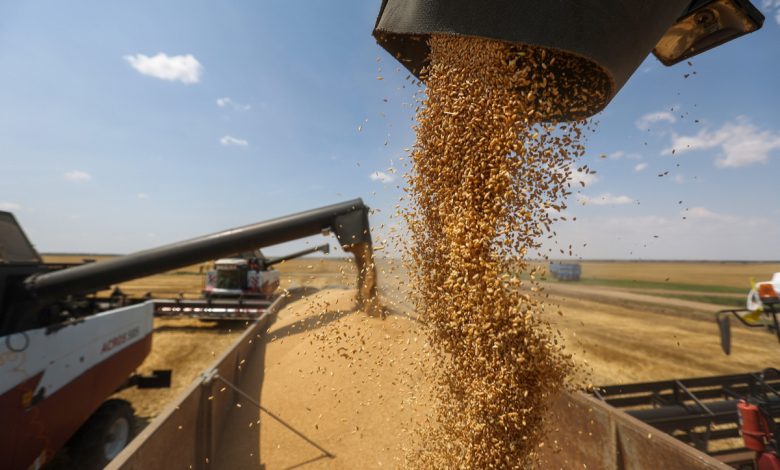After the Escalation of the Russian-Ukrainian Conflict: Major Global Food Crisis Looms
A major global food crisis is looming on the horizon

The collapse of the grain deal in the Black Sea and Russian strikes on Ukrainian infrastructure have renewed the threat to global food security from disrupted supplies. Moscow is pressing for a larger share of the global grain exports as the crisis unfolds, with Russia and Ukraine targeting each other’s essential commodity export infrastructure since the Kremlin’s withdrawal from the United Nations-mediated deal in July of last year. This allowed Ukrainian grains to be exported through the Black Sea. This has prompted traders to fear further supply disruptions.
Food Crisis
The British newspaper “Financial Times” confirmed that Russian forces launched missile strikes on Ukrainian grain facilities and threatened to target all ships crossing the Black Sea to their ports. Meanwhile, Kyiv launched drone strikes against a Russian warship and an oil tanker.
Arif Hussain, Chief Economist at the United Nations’ World Food Programme, stated that this escalation increases risks and leads to uncertainty. He added that any wrong move by either party would have dire consequences because there is no immediate alternative for all the grains exported by Russia and Ukraine from the Black Sea.
Analysts suggest that Ukraine’s disruption of wheat, barley, corn, and other grain exports opens up an opportunity for Moscow to control a larger share of the global grain market. The crisis has led to rising prices in the long term, allowing the Kremlin to compensate for some lost revenue due to Western economic sanctions.
Russian Control
The British newspaper explained that Russia is already the world’s largest source of wheat. It achieved a record grain harvest in 2022-23, producing 23% more than the average of the previous five years. While it is expected to produce slightly less next year, it is still a bountiful harvest. This is likely to grant Moscow around 60 million tons to export in the coming year – much more than usual – according to figures from S&P Global Commodity Insights.
Anthony Rizzo, Agriculture and Fertilizer Analyst at the consultancy CRU, said, “Moscow sees an opportunity where if you take out the Ukrainian share of the market, there’s a lot of share that Russia can take,” adding that a significant amount of the record harvest is stored and must be exported “to make way” for the next harvest.
Russian President Vladimir Putin stated that Russia will provide free grains to some African countries, which used to rely on Ukraine for supplies, days after the collapse of the deal. The grain deal collapse comes at a time when the global food system is facing disruptions ranging from India’s ban on exporting non-basmati rice to record prices for olive oil. Middle East and Africa Most Affected
The British newspaper clarified that while China and Spain are the largest importers of Ukrainian grains by sea, the most affected countries are likely to be developing nations in Africa and the Middle East, which relied more heavily on the country for larger proportions of supplies and may struggle to access alternative sources at higher prices.
The Black Sea grain initiative allowed the export of around 33 million metric tons of crops by sea from Ukraine since August of last year, equivalent to 8% of the total global corn and wheat exports in 2021-22. Nearly 60% of these exports went to developing countries and China, according to the coordinating committee monitoring its implementation.
Standard & Poor’s agency said that Ukraine has also exported an additional 35 million tons of agricultural products through more expensive alternative routes using land, rail, and river transport since June last year. The wheat benchmark jumped 20% after Russia pulled out of the grain deal but returned to $6.39 per bushel, the same as before the deal’s collapse. The prices now are much lower than the levels from February to June of last year, when they soared over $10 per bushel after the widespread Russian invasion. However, they remain about a third higher than pre-conflict levels.
Paul Hughes, Chief Agricultural Economist at S&P Global, noted that the Russian-Ukrainian conflict will have a greater impact on Ukrainian production levels than the collapse of the Black Sea deal. This limits the available export quantities, near the amounts that left the country through alternative means last year.












